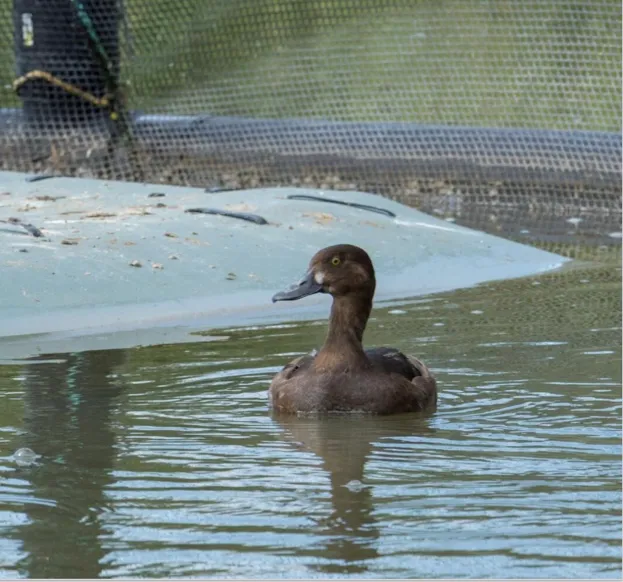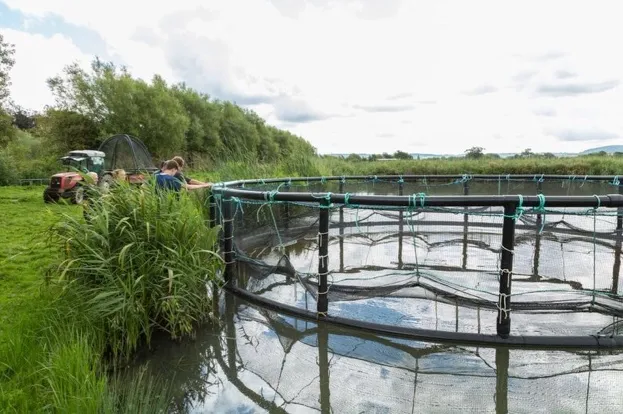Tufted ducks are trialling an innovative aviary in Gloucestershire that could help the Critically Endangered Madagascar pochard.
The floating aviary is based at the Wildfowl and Wetland Trust’s (WWT) Slimbridge Wetland Centre and has been developed by experts from a salmon fishing farm.
Both tufted ducks and Madagascar pochards dive for their food – a floating aviary enables them to do so, whereas a standard aviary does not.

A tufted duck in the new floating aviary © Sam Stafford
WWT have been breeding the Madagascar pochard in captivity in Madagascar and hope to release the birds into the wild in 2018 using the floating aviary.
Conservationists are testing the floating aviary on tufted ducks first as previous attempts to release a diving duck species back into the wild have failed.
Even if the Madagascar pochard release is a success, the species faces other challenges.
“Madagascar’s wetlands are not in a healthy state,” says WWT’s Peter Cranswick.
“We’ve identified one – Lake Sofia – where the damage is less severe and that’s where we plan to release the pochard. But, if they leave that lake, their chances of survival are very low.”
The Madagascar pochard was thought to be extinct for 20 years, but was re-discovered in 2006.
One of the issues facing this species is that the lake on they were living was too deep for the young ducklings to feed and the ducklings were starving to death.

Staff at WWT Slimbridge launch the floating aviary onto one of the ponds © Sam Stafford